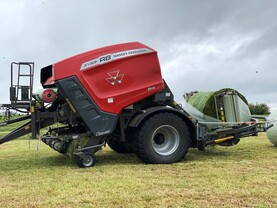Both last year and this year, mart managers right across the country have been voicing growing concerns over the numbers of cull continental cows passing through livestock marts.
While analysis of the cow kill last year would have shown little signs of a slippage in the suckler herd, the discontent over the larger numbers of cull cows offered for sale through 2018 has continued.
Analysis
Analysis of the cow kill for 2018 shows an increase of 6.6% or 23,384 head up to early December.
Taking into account the fact that dairy cow numbers increased by 21,562 head in 2018 and 60,888 from 2016 to 2017, this increase in the cow kill is not alarming considering the overall increased cow numbers in the country.
If we look at the trend in suckler cow births over the past few years, we can see that in 2015 there were over one million births recorded to suckler cows.
Mart managers were growing increasingly concerned that weanling numbers were just not there
While numbers have fluctuated in the last few years, in 2018 there were only 839,744 births recorded to mid-November, a decrease of over 100,000 births on last year.
However, this figure will reduce before year-end in line with calf registrations.
In the autumn, mart manager concerns regarding large suckler cow entries at marts combined with much weaker weanling prices and reducing margins in the sector sparked increased concern.
In addition, the flow of weanlings through the early autumn was slow.
At that stage, some mart managers were growing increasingly concerned that weanling numbers, particularly in the west, were just not there as a result of a contracting suckler herd.
While mart sales in November and December saw a better flow of weanlings, many mart managers in suckler areas have said that overall weanling throughput in 2018 is back on 2017 levels and is in line with the slowly reducing suckler herd.
While mart managers accept that the reason for the declining numbers is predominantly down to low margins, which are being further and further eroded by increasing input prices and weaker market returns, they feel that the knock-on loss to rural economies of lower suckler numbers would be greater than the cost of increasing support to the sector.






 This is a subscriber-only article
This is a subscriber-only article










SHARING OPTIONS: